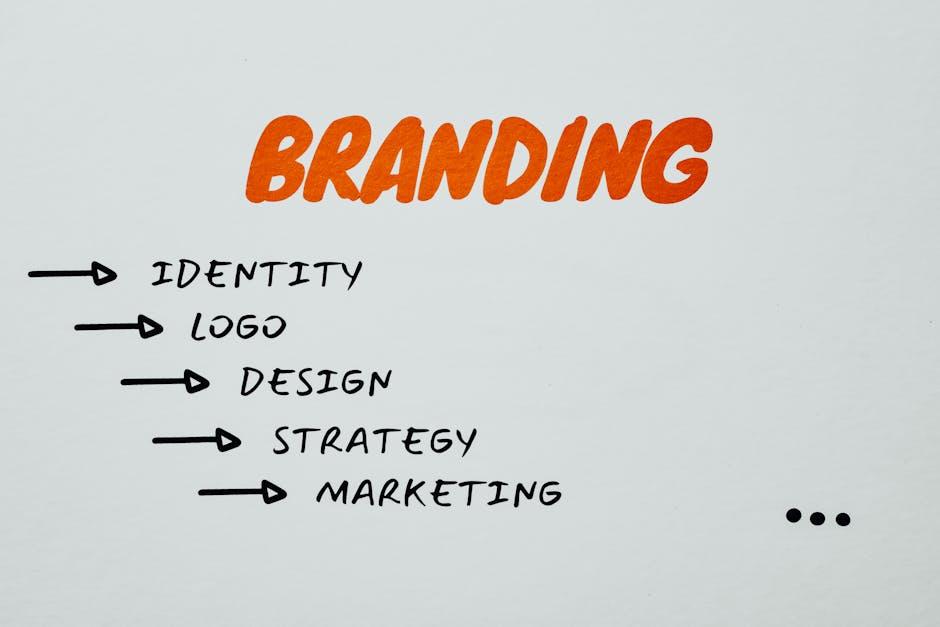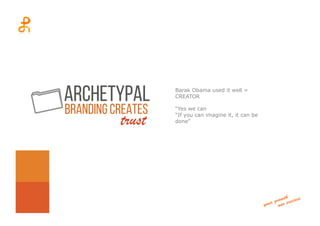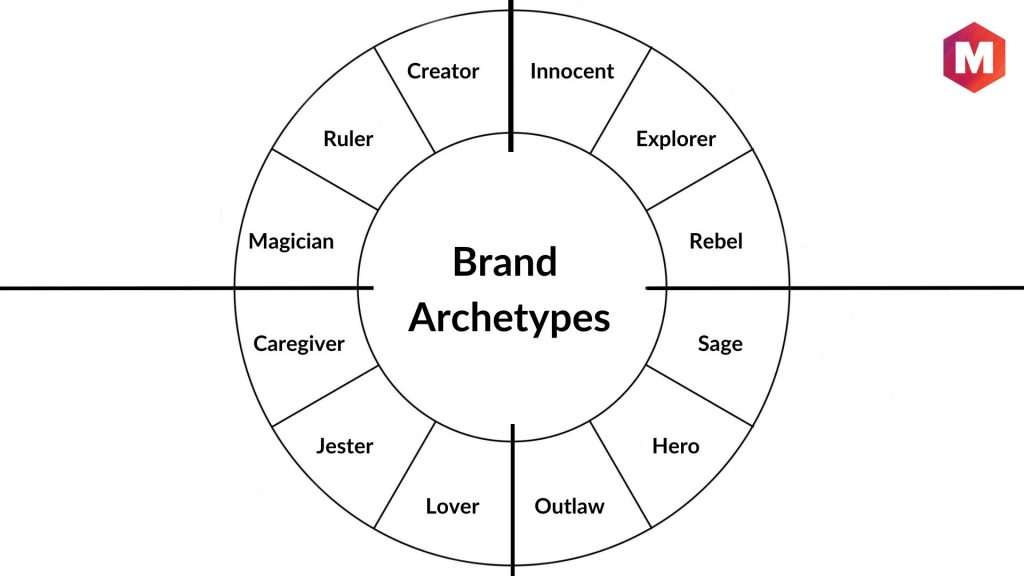
Ah, logos – those little symbols that serve as the secret agents of brand identity. Much like spies on a mission, these seemingly innocent images hold the power to sway our emotions, influence our decisions, and make us buy things we probably don’t need. But behind every logo lies a hidden code – an archetypal power that speaks to our subconscious in ways we can’t even begin to fathom. So grab your decoder ring and join us on a journey through the cryptic world of brand identity, where logos are more than just pretty pictures – they’re the key to unlocking the secrets of consumer psychology.
The Importance of Archetypes in Branding
When it comes to branding, archetypes play a crucial role in establishing a brand’s identity and connecting with consumers on a deeper level. These universal symbols and characters are like the secret sauce that adds flavor and personality to a brand, making it stand out in a sea of competitors.
Think of archetypes as the characters in a play, each with their own unique traits and characteristics. By tapping into these archetypes, brands can create a compelling narrative that resonates with their target audience and leaves a lasting impression.
From the innocent and optimistic Hero to the mysterious and rebellious Outlaw, each archetype brings its own strengths and weaknesses to the table. By understanding these archetypes and incorporating them into branding strategies, companies can create a powerful and unforgettable brand personality that speaks directly to consumers.
- The Sage: Wise and knowledgeable, this archetype represents intelligence and authority.
- The Jester: Fun-loving and playful, this archetype brings humor and entertainment to the table.
- The Lover: Romantic and passionate, this archetype represents emotions and relationships.

Understanding the Psychological Impact of Logos
Logos may seem like innocent little symbols, but the psychological impact they have on us is no joke. Here’s a deep dive into the crazy world of logos:
Embarrassment: Ever see a logo that just makes you cringe? That’s not by accident. Logos are designed to evoke emotions, and embarrassment is one of them. Whether it’s a poorly drawn cartoon character or a suggestive shape, logos have the power to make you turn fifty shades of red.
Indecision: Have you ever spent hours scrolling through a website trying to pick the perfect logo design? Yeah, that’s because logos are masters of manipulation. They know exactly how to play on your insecurities and make you second-guess yourself until you’re in a full-blown existential crisis.
Confidence: On the flip side, a well-designed logo can make you feel like a million bucks. The right color, font, and shape can boost your confidence and make you feel like you’re ready to take on the world. Who knew a simple symbol could have such power over our fragile little minds
Unpacking the Common Archetypes Used in Branding
When it comes to branding, there are certain archetypes that are commonly used to create a strong brand identity. These archetypes are like the characters in a story, each with their own unique traits and attributes that help to convey a brand’s personality and values.
Here are a few of the most common archetypes you might come across in branding:
- The Rebel: This archetype is all about breaking the rules and challenging the status quo. Rebels are bold, daring, and unapologetically unique. Think of brands like Harley Davidson or Virgin Airlines.
- The Caregiver: Caregiver brands are nurturing, compassionate, and always looking out for others. They prioritize the well-being of their customers above all else. Companies like Johnson & Johnson or Dove embody this archetype.
- The Explorer: Explorer brands are adventurous, curious, and always seeking out new experiences. They are constantly pushing boundaries and exploring new horizons. Think of brands like Patagonia or National Geographic.
By tapping into these archetypes, brands can create a more engaging and memorable brand identity that resonates with their target audience. So next time you’re developing a brand strategy, consider incorporating one of these common archetypes to make your brand truly stand out!

How Companies Utilize Archetypal Imagery in Logos
Everyone knows that a logo is a crucial element in a company’s branding strategy. But have you ever stopped to consider the deep, mystical power of archetypal imagery in logos? Let’s dive into how companies leverage these powerful symbols to make their brand stand out from the crowd.
First off, we have the classic example of the Hero archetype. Think of Nike’s iconic swoosh – it’s like a call to action, urging you to just do it! The Hero is all about bravery, strength, and overcoming obstacles, which is exactly the message Nike wants to convey to its customers. Plus, who wouldn’t feel like a superhero wearing a pair of Nike sneakers?
Next up, we have the Magician archetype. Look no further than the Apple logo for a perfect illustration of this mystical symbol. The Apple logo with its missing bite taps into our primal desire for knowledge, innovation, and transformation. It’s almost like taking a bite of the forbidden fruit and unlocking a whole new world of possibilities.
Lastly, let’s not forget about the Lover archetype. Coca-Cola’s timeless logo with its distinctive script and red color scheme practically screams passion, connection, and enjoyment. With just a sip of Coke, you’re transported to a place of shared experiences, romance, and pure delight. It’s no wonder the brand has remained a global symbol of love and unity for generations.

The Role of Archetypal Power in Building Brand Loyalty
When it comes to building brand loyalty, one cannot underestimate the power of archetypes. These universal symbols and patterns play a key role in connecting with consumers on a deeper level and fostering long-lasting relationships. Here’s how archetypal power can help in building brand loyalty:
First and foremost, archetypes tap into the subconscious minds of consumers, triggering emotional responses that drive loyalty. By embodying familiar archetypes such as the Hero, the Rebel, or the Sage, brands can create a sense of resonance with their audience. It’s like speaking their language without actually saying a word. Who knew that a simple symbol could have such a powerful impact?
Furthermore, archetypes provide a framework for storytelling, allowing brands to craft narratives that resonate with their target audience. By aligning brand values with archetypal themes, companies can create a compelling narrative that captures the imagination of consumers. Who wouldn’t want to be a part of a brand story that feels like it’s straight out of a myth or legend?
Lastly, archetypes offer a sense of continuity and familiarity, creating a sense of trust and reliability among consumers. When a brand consistently embodies a certain archetype in its messaging and imagery, it creates a sense of predictability and reliability. It’s like having a reliable friend who always comes through in a pinch. Who wouldn’t want to stick with a brand that feels like a trusted companion?
Examples of Successful Brand Logos Using Archetypal Symbols
Let’s take a look at some brand logos that have successfully incorporated archetypal symbols to create a lasting impression on consumers:
So, the next time you’re designing a brand logo, consider incorporating archetypal symbols to create a powerful and memorable visual identity that resonates with consumers on a deeper level. After all, a logo is more than just a pretty design – it’s a reflection of your brand’s values and personality.
FAQs
Q: What exactly is an archetypal power in logos?
A: Think of archetypal power as the superhero cape of the branding world. It’s all about tapping into those universal symbols and themes that speak to our subconscious minds and make us go, “Wow, I need that product in my life!”
Q: Why is decoding brand identity important for businesses?
A: Well, imagine trying to navigate a busy city without a map. That’s what it’s like for businesses without a strong brand identity. Decoding brand identity helps businesses stand out in the crowded marketplace and connect with their target audience on a deeper level.
Q: Can you give examples of brands that have nailed their archetypal power in logos?
A: Of course! Think of Apple as the Sage, providing innovative solutions to complex problems. Nike as the Hero, inspiring us to push past our limits. And Coca-Cola as the Innocent, bringing a sense of nostalgia and warmth with every sip.
Q: How can businesses use archetypal power to enhance their logos?
A: It’s all about digging deep into their brand story and values to find that perfect archetype that resonates with their audience. Once they’ve found it, they can infuse it into every aspect of their branding, from their logo to their messaging to their customer experience.
Q: Are there any pitfalls businesses should avoid when decoding their brand identity?
A: Oh, absolutely! One big no-no is trying to be all things to all people. It’s like trying to wear every hat at once – you end up looking like a crazy hat lady. Businesses should focus on finding their unique archetype and owning it with confidence.
Time to Unmask Your Brand Identity!
So there you have it, folks! By delving into the world of archetypes and decoding the hidden meanings in logos, you now have the power to unlock the secrets of brand identity. Remember, behind every logo is a story waiting to be told, so go forth and uncover the archetypal power within your own brand. Whether you’re a Hero, Sage, or Jester, your logo is a reflection of who you are and what you stand for. So embrace your inner archetype, create a logo that speaks volumes, and watch as your brand identity shines brighter than ever before. Happy decoding!











